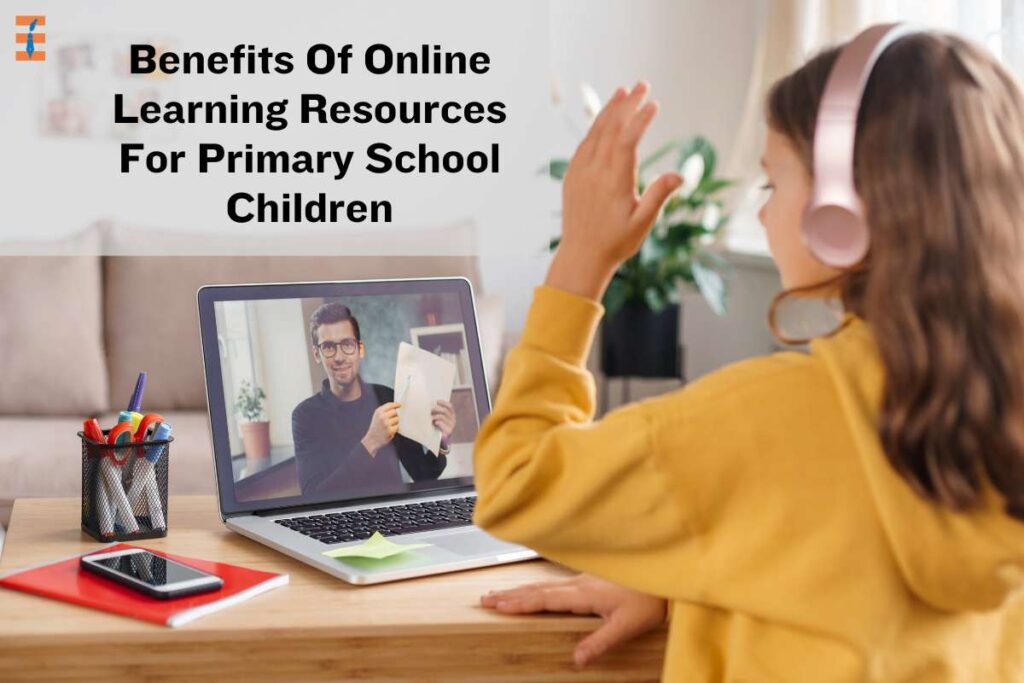Unlocking the Power of Online Learning Resources for Primary School Children
The digital era has modified the landscape of various sectors and the educational field is not an exception. It has offered new ways for students to enjoy the learning process and build engagement with the curriculum. Online learning is becoming popular these days because it eliminates the issue of distance and eases remote learning. Moreover, it is changing the traditional way of sitting and discussing with pupils and fostering creativity. Individualized learning needs are fulfilled through online learning which makes the learning process fun for primary school children. In this article, we will explore the numerous benefits of online learning resources for primary school children.
Here Are 15 Benefits Of Online Learning Resources For Primary School Children:
1. Flexibility and Convenience

Online learning resources provide an unprecedented level of flexibility and convenience for primary school children. Students can access learning materials and activities from the comfort of their homes, allowing them to work at their own pace. Students who are pursuing different learning styles have the benefits of online learning resources. It makes them unable to customize their learning environment to suit their needs.
2. Engaging Multimedia Content
One of the standout features of digital learning resources is its competence to incorporate engaging multimedia content. The numerous resources available for learning include videos, interactive simulations, animations, and games that transform complex concepts into visually appealing and easily understandable lessons. This multimedia approach not only captures students’ attention but also helps them retain information more effectively.
3. Personalized Learning
Personalized learning enhances the unique learning experiences of students and adapts to their individual needs. Digital learning platforms can tailor the content to address the strengths and weaknesses of students and identifies which career field would be suitable for them in the future. It makes sure that educator as well as students receives the support that is needed to excel in their career.
4. Access to a Wide Range of Subjects

Online learning resources open up a world of subjects beyond the confines of a traditional classroom. Primary school children can explore topics that pique their interests, whether it’s a foreign language, coding, art, or music. This exposure to a diverse array of subjects can foster a love for learning and help students discover their passions from an early age.
5. Interactive Learning and Immediate Feedback
Interactive quizzes, puzzles, and exercises encourage active participation and critical thinking among primary school children. Online resources often provide immediate feedback, enabling students to learn from their mistakes and make corrections in real time. This iterative learning process enhances understanding and builds a strong foundation for future academic pursuits.
6. Supplementary and Enrichment Activities
Supplementary and enrichment activities should be made part of the curriculum which will enhance the efficiency of students and boost their confidence. These activities can serve as excellent supplementary learning material to reinforce classroom activities. It will challenge the different skills of students and help them reach their full potential.
7. Parental Involvement
Online learning resources facilitate increased parental involvement in a child’s education. Parents can actively participate in their child’s learning journey by monitoring progress, assisting with assignments, and engaging in joint learning activities. This collaboration fosters a supportive home environment that nurtures a child’s academic growth.
8. Global Learning and Cultural Awareness

The benefits of online learning resources allow primary school children to connect with learners from around the world. Through virtual classrooms, collaborative projects, and online discussions, students can gain insights into different cultures, perspectives, and ways of life. This exposure encourages empathy, tolerance, and a broader worldview.
9. Preparation for the Digital Age
Integrating online learning resources at the primary school level equips students with essential digital literacy skills. In today’s technology-driven world, being proficient in navigating digital platforms, accessing online information, and collaborating virtually are crucial skills for future success. By engaging with online resources early on, children develop the confidence and competence needed to excel in the digital age.
10. Individualized Progress Tracking
Online learning resources often come with built-in progress-tracking tools that allow both students and educators to monitor performance over time. This data-driven approach enables teachers to identify areas where a student may need extra support and tailor their instruction accordingly. Likewise, students can track their own progress, set goals, and take ownership of their learning journey.
11. Reduced Environmental Impact
The use of online learning resources contributes to a more environmentally sustainable approach to education. By reducing the need for printed materials and physical resources, online platforms help conserve valuable natural resources and decrease carbon emissions associated with traditional learning methods.
12. Inclusivity and Accessibility
Online learning resources have the potential to bridge gaps in accessibility and inclusivity. They can be designed to accommodate various learning styles, disabilities, and language preferences. This ensures that all primary school children, regardless of their individual needs, have equal access to quality education.
13. Continuous Learning Beyond School Hours
With online learning resources, learning doesn’t have to stop when the school bell rings. Children can continue their educational journey outside of regular school hours, exploring topics of interest and honing their skills at their own pace. This self-directed learning fosters a sense of curiosity and a lifelong love for learning.
14. Cost-Effective Learning Solutions
Online learning resources can often be more cost-effective than traditional educational materials. Many high-quality online platforms offer free or affordable access to a wide range of educational content. This affordability makes high-quality education accessible to a broader demographic of students and can alleviate financial burdens on schools and families.
15. Preparation for Future Learning Technologies
Embracing online learning resources in primary education prepares students for the integration of future learning technologies. As virtual reality, artificial intelligence, and other advanced technologies become more prominent in education, students who are already comfortable with online resources will be better equipped to adapt and thrive in these evolving learning environments.
The benefits of online learning resources for primary school children are undeniable. These digital tools provide flexibility, engagement, personalization, and a plethora of other advantages that enhance the educational experience and lay the foundation for a successful future. As technology continues to shape the landscape of education, the role of online learning resources will only grow, and their impact on young learners will remain a driving force behind innovation and progress in primary education. By embracing these resources, educators, parents, and students can collectively harness the power of technology to create a brighter, more inclusive, and highly dynamic learning environment.
Conclusion
Online learning as part of the education system will incorporate revolutionized steps towards a bright future for students. It will avail them benefits of flexibility, personalized learning, engaging multimedia content, and empowering global connectivity. The role of digital learning platforms is increasing as technology is advancing on a daily basis. Young students and tutors are using it for their own benefit and trying to thrive in an ever-evolving digital landscape. We hope you enjoyed reading our article and understood the importance of digital learning in today’s world.
Also Read: 5 Pros and Cons of Online Learning

